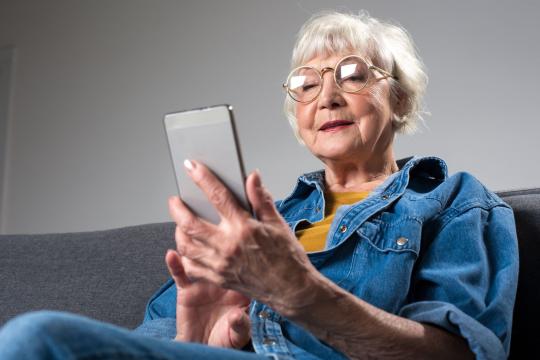
As Strong Recovery converted their groups for substance use disorder (SUD) to videoconferencing during COVID-19, they found this format was also more convenient for some patients: It helped with challenges around transportation and childcare and made some people feel more at ease.
Research on video-based group therapy suggests it can increase access to treatment for behavioral health, including in rural communities:
- “Home-based videoconferencing groups overcame known barriers for attending face-to-face groups” including travel demands. They “could be used to develop new and relatively low-cost interventions, particularly with at-risk groups such as those living in rural areas.”1
- “Given the limited availability of mental health providers, especially in remote or rural areas, it is reasonable to consider group-based treatment [through telehealth] as a way to disseminate evidence-based care more broadly.”2
The Substance Abuse and Mental Health Services Administration (SAMHSA) describes barriers people in rural communities face in finding treatment and how telehealth can help offset them—with outcomes comparable to in-person treatment. SAMHSA’s guidance, summarized in the table below,3 points to the advantages of telehealth strategies like videoconferencing groups.
While video-based group therapy is the focus of this article series, telehealth can take a variety of forms as a tool in the treatment of SUD. It includes, for example, assessments and modules that can be used at any time as well as telephone-based therapy occurring in real time.4 When implementing social distancing, Strong Recovery quickly pivoted to telehealth by phone to provide individual therapy. Not dependent on internet or a video camera, this audio-only approach continues to be the most convenient type of telehealth for some patients.During COVID-19, federal agencies have provided flexibilities around telehealth. Medicaid and Medicare have adjusted their reimbursements for telehealth services including therapy by phone, for example, and use of certain video platforms that are not HIPAA compliant has been permitted. Providers should remain current on federal and state policies as well as third-party billing considerations as the landscape shifts during and after the pandemic
Resources to help providers and patients with telehealth include:
- Health Resources and Services Administration telehealth website
- Rural Health Information Hub Rural Telehealth Toolkit
- For broadband/internet, Universal Service Administrative Co.’s Lifeline program (individuals) or Rural Health Care program (providers and facilities)
- Center for Connected Health Policy, which includes information about policy changes due to COVID at the federal and state levels
For a full description of videoconferencing groups, see our main article.
References
[1] Banbury, A., Nancarrow, S., Dart, J., Gray, L., Parkinson, L. (2018). Telehealth interventions delivering home-based support group videoconferencing: Systematic review. Journal of Medical Internet Research, 20(2), e25.
[2] Gentry, M.T., Lapid, M.I., Clark, M.M., Rummans, T.A. (2018; 2019). Evidence for telehealth group-based treatment: A systematic review. Journal of Telemedicine and Telecare, 25(6), 327–342. Quotation is from the conclusion.
[3] Substance Abuse and Mental Health Services Administration. (2016). Rural behavioral health: Telehealth challenges and opportunities. In Brief 9(2).
[4] A recent article from the Mayo Clinic reviews telehealth interventions for SUD treatment, placing them in the context of the COVID-19 pandemic. It also suggests strategies for implementation. Oesterle, T.S., Kolla, B., Risma, C.J., Breitinger, S.A., Rakocevic, D.B., Loukianova, L.L., . . . Gold, M.S. (2020). Substance use disorders and telehealth in the COVID-19 pandemic era. Mayo Clinic Proceedings, 95(12), 2709-2718.